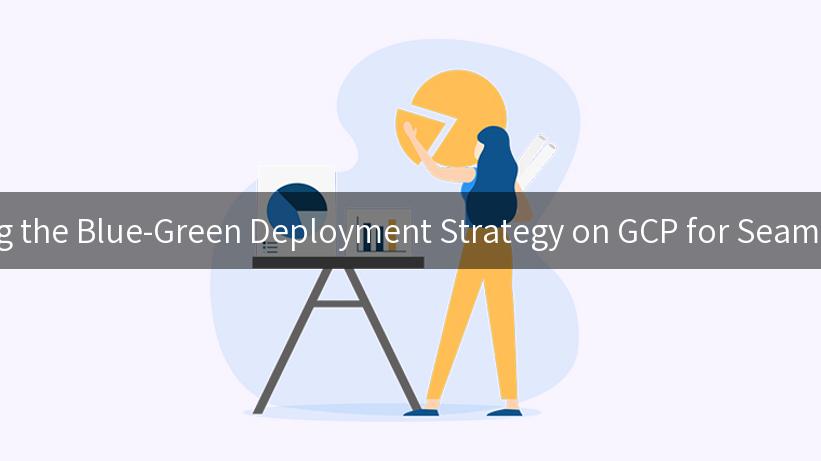
In the world of modern software development and deployment, ensuring a smooth and seamless upgrade process is paramount to maintaining application performance and user satisfaction. One effective strategy that has gained significant traction among DevOps teams is the Blue-Green Deployment strategy, particularly when leveraged with the capabilities of Google Cloud Platform (GCP). This article will delve deep into the intricacies of blue-green deployment, its advantages, and its implementation using GCP, while also incorporating the keyword phrases around API calls, Tyk, API upstream management, and blue-green upgrades on GCP.
What is Blue-Green Deployment?
Blue-Green Deployment is a release management strategy that minimizes downtime and reduces risks when deploying new versions of an application. In this approach, two identical environments—the “Blue” environment and the “Green” environment—exist, where only one environment is live at any given time.
When an update or new version of the application needs to be deployed, it is first released to the inactive environment (e.g., Green) while the active environment (e.g., Blue) continues to serve user traffic. Once the new version has been verified in the Green environment, the traffic is switched over from Blue to Green. This switch can happen almost instantaneously, allowing for seamless upgrades and rollbacks if necessary.
Benefits of Blue-Green Deployment
-
Reduced Downtime: With two active environments, your system can shift traffic between them without causing outages.
-
Easy Rollback: If any issue arises with the new deployment, reverting to the previous version is as simple as switching traffic back to the Blue environment.
-
User Acceptance Testing: New features can be tested in the Green environment before they are accessible to customers.
-
Improved Deployment Velocity: DevOps teams can deploy updates more frequently, since the risk of downtime during upgrades is considerably reduced.
Basic Concept of Blue-Green Deployment Flow
The typical flow for a Blue-Green Deployment can be summarized as follows:
- Setup Blue and Green Environments: Create two identical environments in GCP.
- Deploy New Version: Deploy the new version of your application in one of the environments.
- Test the New Version: Conduct tests in the newly deployed environment.
- Route Traffic: Switch the production traffic to the new environment.
- Monitor for Issues: Monitor the system for any issues post-deployment.
- Rollback if necessary: If problems are detected, rollback to the old environment.
Using GCP for Blue-Green Deployments
GCP offers numerous tools and services that support blue-green deployment practices, making the process more efficient. Let’s explore how you can set this up using some of GCP’s capabilities, while incorporating the concept of API calls for managing and routing traffic effectively.
Step 1: Infrastructure Setup
Begin by configuring your cloud infrastructure:
| Component |
Description |
| Compute Engine |
Use to create Virtual Machines for each environment (Blue and Green). |
| Kubernetes Engine |
Utilize managed Kubernetes for orchestrating containerized applications. |
| Load Balancer |
Implement GCP’s Load Balancer to manage traffic between the environments |
| Cloud Functions |
Leverage Cloud Functions for automating deployments and switchovers. |
Step 2: Configure API Upstream Management with Tyk
To handle traffic routing effectively during the switch between Blue and Green, utilizing an API gateway like Tyk is essential. Tyk is an open-source API Gateway that facilitates API calls, security, analytics, and management.
Here is a simple Tyk configuration to illustrate how you can manage multiple upstreams (Blue and Green environments):
{
"name": "My Service",
"api_version": 1,
"proxy": {
"listen_path": "/",
"target_url": "http://blue-backend:8080",
"strip_listen_path": true
},
"versions": {
"1.0": {
"proxy": {
"listen_path": "/v1/my_service/",
"target_url": "http://green-backend:8080",
"strip_listen_path": true
}
}
}
}
In the example above, you can configure the Tyk API Gateway with routes pointing to either the Blue or Green backend based on your needs.
Step 3: API Calls for Deployment Management
After setting up the infrastructure, use API calls to automate deployments and traffic switches. Here’s an example of how an API call can be made to switch traffic between environments using a curl command:
curl --location 'https://api.yourdomain.com/v1/switch-environment' \
--header 'Content-Type: application/json' \
--data '{
"current": "blue",
"new": "green"
}'
This API call could invoke a function that changes the routing configuration in Tyk, enabling the flow of traffic to the Green environment.
APIPark is a high-performance AI gateway that allows you to securely access the most comprehensive LLM APIs globally on the APIPark platform, including OpenAI, Anthropic, Mistral, Llama2, Google Gemini, and more.Try APIPark now! 👇👇👇
Advantages of Blue-Green Deployment on GCP
Using GCP for implementing a Blue-Green Deployment strategy provides numerous advantages, such as:
- Scalability: GCP enables you to scale your applications quickly and easily, matching user demand without need for significant reconfiguration.
- Reliability: GCP’s robust infrastructure ensures that applications remain highly available and performant.
- Integration: GCP services can integrate with various CI/CD tools, facilitating smoother deployments and testing processes.
Monitoring and Logging
Once your deployment is complete, it is crucial to monitor your applications for any irregularities. Utilize GCP’s monitoring tools such as Stackdriver to track application metrics and logs. This can be valuable in identifying performance bottlenecks or other issues quickly.
Conclusion
The Blue-Green Deployment strategy, especially when implemented on the Google Cloud Platform, offers a powerful approach to managing application upgrades seamlessly. By leveraging effective API calls, upstream management techniques through tools like Tyk, and GCP’s robust features, teams can significantly reduce the risk associated with deployments.
In conclusion, adopting Blue-Green deployments not only augments your DevOps practices but also enhances overall user satisfaction through effortless, uninterrupted software delivery.
By understanding and effectively implementing this strategy, organizations can enjoy structured, risk-averse upgrade paths that propel them forward in this fast-paced digital landscape.
This comprehensive exploration of blue-green deployment on GCP highlights its significance in modern software development, serving as a blueprint for teams aiming to optimize their deployment processes while minimizing user impact.
As software continues to evolve and integrate more complex functionalities, being equipped with robust deployment strategies will certainly be a competitive advantage in providing dependable software solutions.